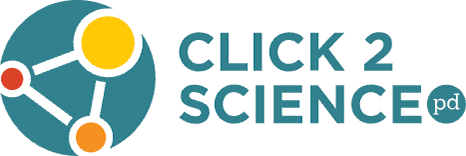Out-of-School Time STEM Learning Opportunities Inspire Young People to Explore, Discover & Create

Out-of-School Time STEM Learning Opportunities Inspire Young People to Explore, Discover & Create
The process of teaching and learning science, technology, engineering, and mathematics (STEM) offers youth opportunities to make sense of the world they live in and prepare them for the future workforce. High-quality STEM opportunities help youth develop critical-thinking, collaboration, and problem-solving skills; enhance creativity; and engage in an investigative process. These skills are key to future job security, as STEM-related jobs are some of the fastest growing jobs in the country and 80 percent of all future jobs will require STEM literacy and skills. STEM skills are also critical for all members of our society to be informed consumers and make decisions about complex issues that face the world.
Before we discuss finding out-of-school time STEM learning opportunities let’s briefly touch on two topics: 1) U.S. STEM growth and 2) how out-of-school time STEM programs help youth excel.
U.S. STEM Growth
STEM education brings prosperity, preparedness, and opportunity. Exposure to formal and informal learning in STEM subjects prepares students for the future. Supporting quality STEM education for all youth is, therefore, vital to the nation’s social and economic prosperity.
- One job in the high-tech sector leads to 4.3 jobs in local goods and services industries -which results in positive ripple effects across the entire economy.1 Between 2014 and 2024, the number of STEM jobs will grow 17%, as compared to 12% for non-STEM jobs.
- At all levels of educational attainment, STEM job holders earn 11% higher wages compared to their same-degree counterparts in other jobs.2
- Almost all of the 30 fastest-growing occupations in the next decade will require at least some background in STEM.3
Out-of-School Time STEM Programs Help Youth Excel
Afterschool programs that focus on STEM let children explore new ideas without worrying about their grades.
The study “Afterschool & STEM: System Building Evaluation 2016,” surveyed and looked at the impact of more than 160 afterschool programs providing informal STEM education in 11 states. Nearly 1,600 students in grades 4-12 took part int he program.
According to the study, more than 70% of students in all participating states showed positive gains in STEM subjects, careers, knowledge, and 21st-century skills by participating in STEM-focused afterschool programs.
The study also found that 80% of students reported a positive gain in their science career knowledge, 78% said their interests in science had increased, 72% reported an increase int heir perseverance and critical thinking skills, and 73% reported an increase in “STEM identify” – a personal belief that he or she can do well and succeed in science.
Finding STEM Learning Opportunities
Understanding that U.S. STEM growth is vital and that out-of-school programs help increase a child’s success rate we can now look at how to find out-of-school time STEM learning opportunities.
As the largest directory of STEM opportunities in the U.S., The Connectory makes it easy for families to discover local STEM opportunities for the children in their lives.
Parents and other caregivers can find events, programs, and activities in their community that inspire young people to develop the skills they need to become the problem solvers of tomorrow. A robust search option allows users to filter results by keywords, location, date, area of interest, and age.
For program providers, The Connectory is a place to showcase programs and opportunities to an engaged audience of families and other STEM providers. Providers open to collaboration can use the Partner Search feature (must be logged in to view), using keywords and filtering search results by location or distance, collaboration interest, resources available, and resources needed. By “resources,” we mean the assets that providers have or are looking for, such as, girls or boys interests in STEM, STEM curriculum, and/or access to tools, equipment, or computers. Detailed provider pages highlight the pertinent details for choosing and contacting the perfect collaborator to enrich and build your program.
The Connectory’s partnership with VolunteerMatch allows program providers to link their accounts and recruit volunteers to grow their non-profit STEM programs.
Managed by the National Girls Collaborative, this free, online directory is a powerful online collaboration tool, offering access to a network of more than 5,000 STEM program providers in all 50 states, and several countries, with a volume that continues to grow by the week. Join today and help inspire young people to explore, discover, and create.
Footnotes
1 Bay Area Council Economics Institute, December 2012
2 Thomasian, John. (2011, December 1). Building a Science, Technology, Engineering, and Math Education Agenda: An Update of State Actions. The National Governors Association Center for Best Practices. Retrieved from https://www.nga.org/cms/home/nga-center-for-best-practices/center-public…
3 Business Center for a College-and Career-Ready America
4 Barnettt & Gareis, 2006
